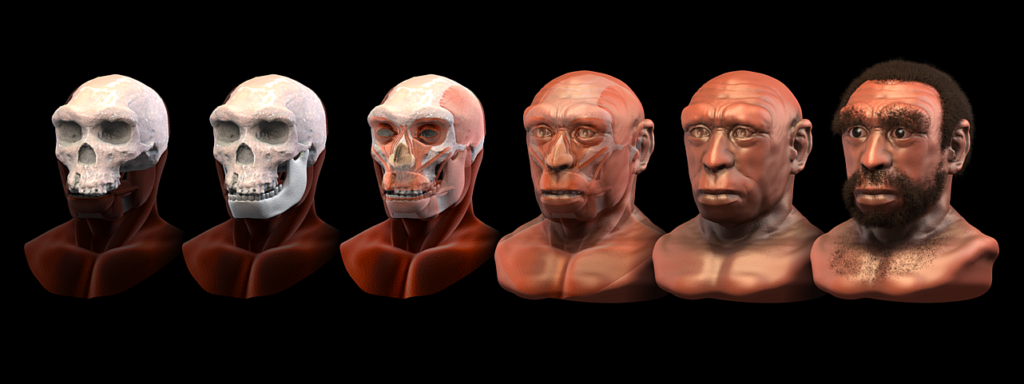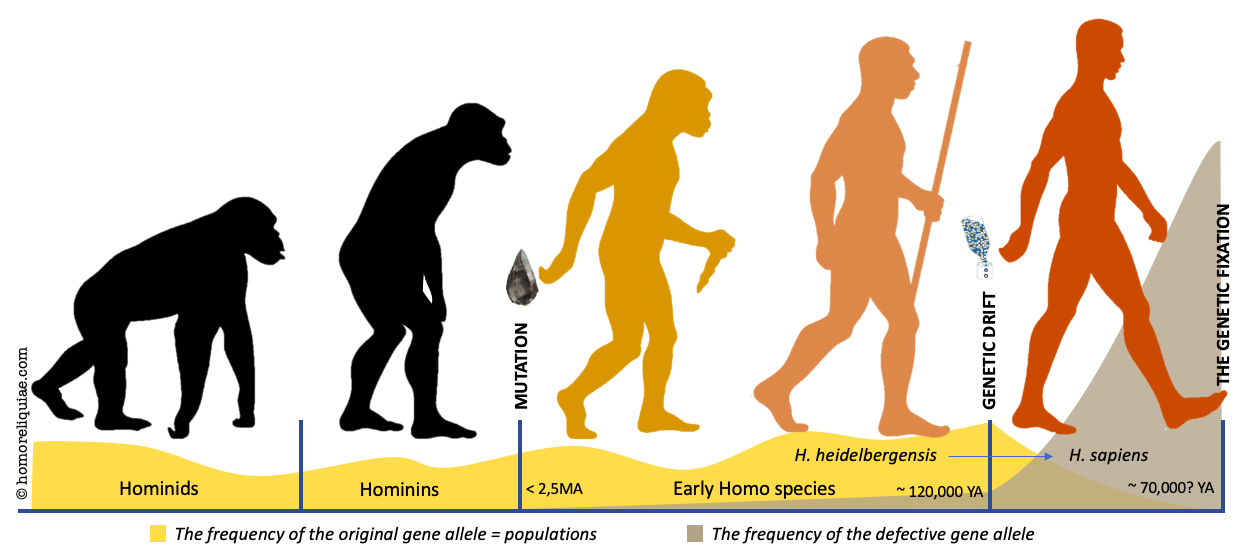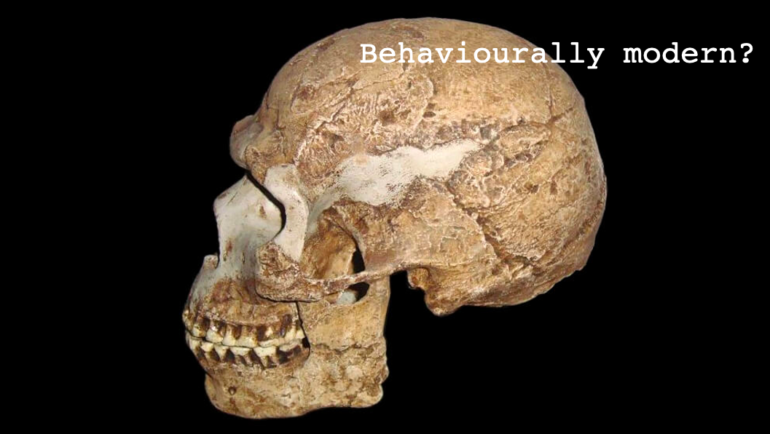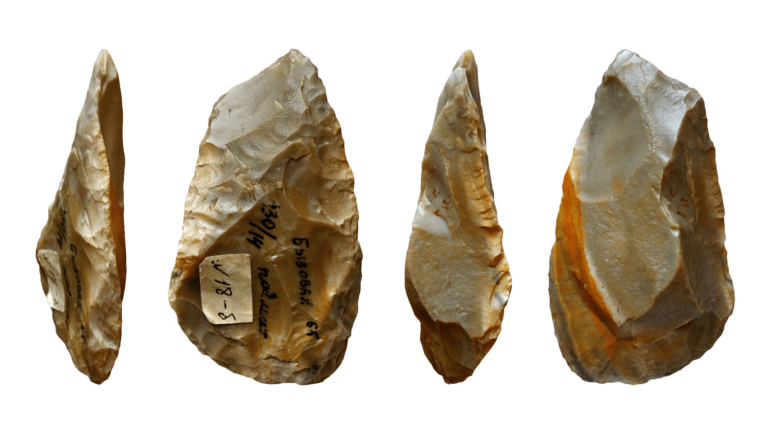In the theories of evolution, the implicit idea from the beginning has been to explain also human emergence. Although the known history of the evolution of the genus homo unveils the mystery of man a bit, no single factor so far can explain the emergence of humans. The transition from Australopithecus to Homo seems to remain an eternal mystery. Modern human almost appears to be the ultimate test of the credibility of evolution.
When Charles Darwin wrote his book On the Origin of Species in 1859, a frightening idea popped up behind its theory of natural selection. His work gave the impression that humans evolved from animals, apes explicitly. That was a declaration of war against the fundamental doctrines of both science and religion. This sacred covenant did not want to explain humans as animals, but the task proved surprisingly complicated when it finally became necessary to evidence that in science. The domestic nature of man did not fit well with the prevalent wild. However so, many believed that modern humans must have resulted from natural selection. As a result, the appearance of the first modern humans was pushed as far back as possible in the past, preferably further than 300,000 years. In science, the final stages of human evolution are still more guesses than knowledge.
A double mystery
One guess is the so-called “missing link”. “Missing link” is a hypothetical creature that, when discovered, would clarify the appearance of modern humans through the mechanisms of evolution. The statement contains the unspoken but clear assumption a single discovery can explain the emergence of modern humans. There are many single findings, but they complicate rather than make understanding easier.
Instead of one, I propose dividing human emergence into two separate processes, namely that of 1) how the specific human characteristics manifested in stone tools emerged in the first place, and 2) how the specific human characteristics became common as “species characteristics”. The first process relates more to the genotype, the set of one’s genetic material, and the second more to the phenotype, or the set of one’s observable characteristics or traits (the environment only interacts with the individual’s phenotype). Even though there are millions of years between these processes, they are closely intertwined.
In my opinion, the fatal mistake in scientific research has been to think of all human-related discoveries as representing the whole species. The emergence of features requires variation in genotype. The stone tools were not made by species but by individuals who were not typical species representatives. The mistake is to regard manufacturing stone tools as a standard feature that can thus simply be defined as a species characteristic. That is certainly not the case since this variation did not become widespread despite millions of years of evolution. In that respect, nothing changed dramatically. That can be demonstrated by the story of stone tools that characterise the millions of years of rather changeless history of the genus homo.
A diagram explaining the emergence of modern human. | More than 2 million years separates the two events that could explain the special features of modern human. On the one hand, a genetic mutation that made a few individuals mentally non-adult (i.e., similar to modern humans) and, on the other hand, a scientifically recognized bottleneck in which modern humans are believed to have emerged. The colored curves in the background depict the putative change in gene variations before and after the mutation. These two distant and separate events explain the emergence of modern humans. This means that the genetic bottleneck alone remains a detached and senseless explanation without regard for mutation. Note: Despite the widely used image, I don’t want to claim that this diagram depicts progress, on the contrary.
Variation
There are currently three ways of gene variation known: mutation, sexual reproduction, and gene flow. One of these must be the cause for the exceptional art of making tools. Sexual reproduction increases genetic diversity and could explain human nature but does not explain the origin of a particular trait—neither does gene flow, which refers to the transfer of genes between populations and species. Mutation, or genetic change, is a crucial mechanism for variation and a potential producer of new human traits. It can be a so-called spontaneous mutation. That usually occurs in about every millionth cell division.
A mutation can be ineffective, but when it has effects, they are generally detrimental or harmful. Although changes occur in DNA during an individual’s life, only mutations in a germline can pass on to the next generation and cause species-level changes. Although we do not directly see how and where that could have appeared to humans, it seems apparent that we have inherited it from other human species, which in turn inherited it from their ancestors. There is no simple explanation for the emergence of stone tools in science, but mutation provides a good one. This mutation has a long history as all human species manufactured stone tools. Any behaviour that deviates from the animals’ is probably due to it. But it is critical to note that while mutation alone theoretically could explain the random tool making for early homo species, it would not be sufficient to explain modern humans’ systematic manufacture of tools. It would require another asset.
The threat of extinction
The manufacture of tools is an atypical feature that neither explains the evolution nor the viability of genus homo. Besides, all homo species that make tools are extinct apart from modern humans. It is, therefore, a mystery how a minor trait can suddenly multiply and eventually override the dominant feature. Yet, this is precisely what human emergence is all about. Furthermore, it is known that extinction has also threatened modern humans and that at that period, the population shrunk only to a few thousand individuals. So, why didn’t humans die out at that time? The answer is that the endangered population would have become extinct had it been homogeneous. But it was not. There were individuals in the population who still carried an ancient genetic variation that had produced cultural traits such as stone axes. Only this variation produced by the mutation can explain how the human population could survive extinction. The variation thus survived, but the gene pool thus narrowed as genetic drift eliminated some alleles. In other words, the original human species became extinct, saving only individuals with genetic variation. That original human species was most likely the one we call the Heidelberg man (or homo bodoensis).

Homo heidelbergensis – forensic facial reconstruction/approximation. Cicero Moraes/Wikimedia Commons
The game-changer
The ultimate reason for making tools is likely an initially rare genetic change that we may have inherited from early hominins. Toolmaking is an indeterminate trait, which first manifested itself in the manufacture of stone tools and soon after that in the use of fire, clothing, and seeking shelter. The root cause is invisible and psychological. The genetic variation did not affect much the viability of its carrier, which probably explains why that was not more widely manifested among other homo species. It remained an almost invisible flaw for millions of years, popping up infrequently every now and then. The population was not transformed by the change in that trait but by the environment. The individuals in the population did not change, and no new features emerged. The human emergence occurred only in the frequencies of the gene alleles, i.e., between the normal and those carrying the gene variation. And this was caused by climate change. It should also be borne in mind that since environmental conditions are always local and rarely, if ever, repeat themselves with evolutionary mechanisms, it is unlikely that modern humans could have emerged in several places several times. Instead, it is more likely that modern humans were born in a single environment and most likely in Africa.

The extinction of the Heidelberg man was due to the drought in Africa caused by the Saale glaciation. Photo by Upesh Manoush on Unsplash.
Microevolution
But what strange thing could have happened in Africa that modified our ancestors to modern humans? Almost in all theories, humans just inexplicably appear in the African savannah. Neither was Darwin able to explain the appearance of humans. In The Descent of Man, he wrote: “The problem, however, of the first advance of savages towards civilisation is at present much too difficult to be solved”. Researchers still admit that this period between 770,000 years ago and 126,000 years ago —known as The Chibanian, previously the Middle Pleistocene—is poorly understood, and that is why paleoanthropologists call it “the muddled in the middle”. Science tries to clear the mess either with new “missing” human species or by terminologically rearranging the prehistoric picture. The final goal is to attach a loose-floating human to the evolution chain.
A couple of factors supports genetic drift as a mechanism for the emergence of modern human. First, it is known that allele spread through genetic drift occurs more rapidly in smaller populations. Such a small human population can be dated and located. Second, in the time frame of human emergence, there is enough time only for a reduction of genetic variation, not for the emergence of a new species through natural selection. Third, genetic drift explains the migration of modern humans and the earlier species out of Africa. Finally, it also explains the changes in the density of separate dispersals. These changes are related to a process in which the interrelations between gene alleles have varied in populations over numerous millennia. The latest wave of out of Africa tells us about the fixation of the defective gene allele.
On human adaptation
Adaptation is the process in which an organism adapts to external or internal environment conditions. Adaptation can also signify a part, structure or activity of an organism that has changed in the adaptation process and better meets the requirements of the external or internal environment. Generally, it means a phenotypic trait or adaptive trait that is maintained and evolved through natural selection. However, the human mental speciality is neither a product of natural selection nor an adaptation. Contrary to what we think, adaptation is not just a matter of surviving in one’s environment but adapting to its environment. Usually, it’s the same thing, but alas, it’s not for humans. A better-adapted species may typically displace the less adapted species, but it cannot be applied to humans. Even if humans survived, we cannot really call them adapted. It may be more appropriate to talk about resisting the environments instead of adaptation.
Adaptation has often been mistakenly confused with conscious human activity, but even more often, it is confused with modifying the environment. That is not adaptation. Adaptation is not about changing the setting but changing the individual. Such a concept has turned on its head. Indeed, civilisation measures human development by its ability to modify the environment while praising him as a master of adaptation. Such a perception despises common sense.

Tools are human’s weapons against nature.
Humans have not shown any sign of adaptation during their existence; on the contrary. Culture is not adapting but opposing it. Medical practice alone is one of the most powerful human actions against adaptation. It is also incorrect to define adaptation based solely on survival in the case of inherently anti-natural humans. If people do not die in a particular environment, it does not mean adaptation. We have the means to get around the difficulties with nature. In addition, adaptation always occurs afterwards, it is passive, and its outcome cannot be predicted. Human emergence, for its part, seems to have been an active and intentional act, which signified an apparent detachment from nature.
As modern humans emerged, the human gene pool converted less suitable for its environment. Stone tool making signifies unadaptedness and our way to isolate ourselves from nature. Nature has not been able to affect human survival for quite some time. Among humans, survival does not mean the survival of the most adapted but often the wealthiest. Therefore, the combination of economics and politics has become a strategic part of survival.




